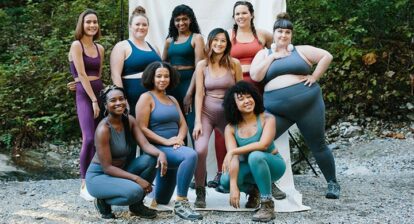The natural eye shades of women are as diverse as the women themselves. Each shade is unique and beautiful in its own way, adding to the beauty and diversity of the world around us.
Here are some of the most common eye shades for women:

Brown Eyes: Brown eyes are the most common eye color for women, and they are found in many different shades, from light brown to dark brown. Brown eyes are caused by the presence of melanin, which makes them darker.

Blue Eyes: Blue eyes are less common than brown eyes, and they are caused by the absence of melanin in the front layer of the iris. Blue eyes can range from light blue to dark blue, and they can be more or less intense depending on the amount of melanin in the back layer of the iris.

Green Eyes: Green eyes are even rarer than blue eyes and are caused by a combination of low melanin and yellowish lipochrome pigments. Green eyes can range from light green to dark green, and they can appear more intense depending on the amount of light present.

Hazel Eyes: Hazel eyes are a mix of brown and green, and they can also contain hints of blue and gray. Hazel eyes can appear to change color depending on the lighting and the colors around them.

Gray Eyes: Gray eyes are rare and can appear blue or green depending on the lighting. Gray eyes are caused by low melanin and a scattering of light in the front layer of the iris.
In addition to these common eye shades, there are also many unique and rare eye shades that are less common but equally beautiful. Ultimately, the diversity of women’s natural eye shades is a testament to the beauty and richness of human diversity.
There are many different types of eye shapes that can vary between individuals. Here are some of the most common eye shapes:
- Almond-shaped eyes: Almond-shaped eyes are one of the most common eye shapes, with a slight upwards tilt at the outer corners.
- Round eyes: Round eyes are circular in shape and appear larger in size than other eye shapes.
- Hooded eyes: Hooded eyes have a fold of skin that hangs over the crease, making the eyelid appear smaller.
- Monolid eyes: Monolid eyes have no visible crease in the eyelid, and the skin covers the entire eyelid.
- Upturned eyes: Upturned eyes have a slight upward tilt at the outer corners, similar to almond-shaped eyes.
- Downturned eyes: Downturned eyes have a slight downward tilt at the outer corners.
- Protruding eyes: Protruding eyes appear to bulge out slightly from the eye socket.
- Deep-set eyes: Deep-set eyes are set further back in the skull, making the brow bone more prominent.
- Close-set eyes: Close-set eyes are located closer together on the face than other eye shapes.
It’s important to note that these are just some of the common eye shapes, and there can be variations within each category. Additionally, eye shape can be affected by factors such as age, genetics, and lifestyle habits.








Customer Reviews
Thanks for submitting your comment!